Social Media Guidance
This section discusses the reasons why inter faith organisations should consider using social media, which platforms are available to them, how to use them and advice about the practicalities of running social media accounts.
This section also provides some examples of content from IFN and resources for further instruction on how to set up accounts and pages. If you are unfamiliar with any of the terms used in this article there is a glossary provided at the bottom of the page.
IFN has social media accounts on Facebook, Instagram, LinkedIn and Twitter. We primarily make use of Facebook and Twitter, on which we try to post 1-2 times a day per platform. IFN posts pictures from inter faith events, shares significant religious celebrations and highlights important inter faith activity undertaken by other organisations.
IFN also runs social media accounts specifically for Inter Faith Week on Facebook, Instagram and Twitter.
Sections
- 1. What are the benefits of social media?
- 2. The logistics of running social media accounts
- 2.1 Emphasising balance
- 2.2 Trolls and negative comments
- 2.3 Hatespeech
- 2.4 Ownership of social media accounts in a group context
- 3. Content and style of communications
- 3.1 General Advice
- 3.2 Examples of IFN content
- 4. Popular social media platforms
- 4.1 Facebook
- 4.2 Instagram
- 4.3 TikTok
- 4.4 Twitter.
- 5. Glossary
- 6. Further resources
1. What are the benefits of using social media for local inter faith groups?
- It can be a useful way to raise awareness of inter faith events, to educate people and to create a visible online community for your organisation.
- It enhances your outreach efforts by connecting with people outside of your immediate community and this can help to increase the numbers of your organisation.
- In the UK alone it has been found that 57.6 million people have a social media account. The UK’s resident population was estimated by the ONS to be 67 million in 2021.
- Social media also offers a conduit to reaching younger audiences who participate predominantly on some these platforms.
- Digital communications allow those who can’t attend events because of a disability to contribute to inter faith online communities – it therefore can widen accessibility.
- Most social media platforms also offer a private messaging function whereby individuals or groups can directly message you with queries about your group and events that you are a hosting.
2. The logistics of social media
2.1 Emphasising balance
- The growing use of social media can often have the effect of excluding groups who don’t want to use it or who don’t have the technology to use it- this is known as ‘Digital Exclusion’. It is therefore essential to ensure that information and services that your organisation provides are not limited exclusively to social media as this can result in the alienation of core parts of your group.
- Social media should complement your existing communication efforts rather than replace it. If you want to publicise an event that your organisation is hosting don’t limit this to Facebook and continue to send out information about events through email, word of mouth and leaflets.
- Smaller inter faith organisations will also have limited resources and will often depend on volunteers to run social media accounts. Rather than having a multitude of poorly run social media accounts, it is advisable to focus on one or two platforms as this will be easier and likely more effective.
- Be realistic in your expectations of social media as building a digital presence takes time, experimentation and commitment.
2.2 Trolls and negative comments
- A possible hazard of using social media is that you may become targeted by ‘online trolls’ who may regularly post negative and offensive comments on your content.
- It is instinctive to want to engage with these people and defend yourself from their hostility, but this attempt at dialogue can escalate tensions and negatively affect the public image of your organisation. It is therefore advisable to limit interaction with these comments to prevent inflammatory public discussion and most social media platforms have a function with which you can delete comments and block offensive accounts.
- Make Tech Easier have published an article on how to block users on Instagram, Facebook and Twitter which can be found at https://www.maketecheasier.com/block-users-social-media/
- IFN doesn’t usually engage publicly with offensive posts – most of which aren’t about the IFN. However, if someone were to complain about one of our events we would try to contact them by direct message or through email.
- If you are experiencing regular difficulties with negative comments the IFN are always eager to assist any inter faith group where possible.
2.3 Reporting hate speech and inappropriate posts on social media platform
If your inter faith group is present on social media, you may sadly be subjected to online hate speech. However, if this ever happens to you online there are a variety of different organisations that you can report these issues to which are listed below:
- True Vision: a police-funded website which provides information about hate crime and a way to report hate crime to the police.
- Community Security Trust: offers support for those who have been victims of anti-semitism and offers a service to report hate speech.
- Tell Mama UK: is an independent and confidential support service for those who face anti-Muslim hatred and prejudice in the UK.
- Sikhguard: is an initiative which encourages the reporting of hate crime against members of the Sikh community in the UK.
All social media platforms offer a function through which you can report offensive language and guides to this process are listed below:
- Facebook : https://www.facebook.com/help/212722115425932
- Instagram: https://help.instagram.com/198034803689028
- TikTok: https://support.tiktok.com/en/safety-hc/report-a-problem
- Twitter: https://help.twitter.com/en/safety-and-security/report-abusive-behavior
2.4 Ownership of social media accounts in a group context
- It is normal in an organisation for various people to have the login details to social media accounts. However, it is essential to establish who has access to them to ensure security and to identify who is accountable when something goes wrong.
- If a single account is operated by a number of team members it is useful to agree a system of posting in advance to ensure the avoidance of mistakes and the duplication of content.
- In smaller voluntary groups it is likely that one person will be in charge of the social media accounts of an organisation. Although there is no immediate issue with this groups should avoid allowing complete monopoly of content control and passwords to individual members. This is because if this person leaves the organisation or passes on there is the potential for a loss of passwords or the creation of a huge gap in regard to the organisational social media presence. It is advised that groups safeguard this issue by ensuring passwords are known by more than one person and that members with social media literacy attempt to teach their colleagues. They could also create social media templates which reflect previous posts of an organisation.
3. Content and style of communications
3.1 General advice
- Content that is easy to engage with is likely to gain more traction. Copy needs to be concise, informative and have a ‘hook’ to engage with your post. A ‘hook’ is used in the opening statement of the post to grab the reader’s attention so they will want to read on.
- You should also address your audience as if you are personally speaking to them by referring to them as ‘you’ and you can also refer to your organisation as ‘we’.
- It is also crucial to ensure where possible that your content is supplemented by visual material such as images and video which require less information and are easier to understand. If you struggle to find images you can use free stock photo websites such as https://www.pixabay.com/ and https://commons.wikimedia.org/wiki/Main_Page.
- Video content is particularly important and Cisco reported in 2022 that a total of 82% of global internet traffic will come from either video streaming or video downloads. If you would like more information about video creation, the BBC Academy offers a guide to short video creation.
- It is important to maintain your social media accounts and this means that you should ideally post once a day or a few times a week. Anymore more than this can mean that viewers will potentially become over saturated with your content and no longer view it.
- It can also often be difficult to think of content for your social media accounts as many inter faith groups only meet once or twice a month and this would be their main source of inspiration. Inter faith organisations, however, can remain active by sharing relevant news articles, blogs, pictures of their recent events and inspirational quotes.
- Also a good rule for all social media is that your organisation should share content that goes beyond your own organisation and highlight the work of other.
- organisations. This is a great way to build lasting connections and this enterprise is demonstrated in the examples provided later in this section.
- As a local inter faith organisation, it is crucial to avoid sharing content that promotes one faith as superior to others. This is because you will present your group as being against inter faith activity and will alienate prospective friends. If groups are apolitical they should also avoid sharing content which is specifically political as this will draw them into contentious debates which they may not wish to be associated with.
3.2 Examples of IFN content
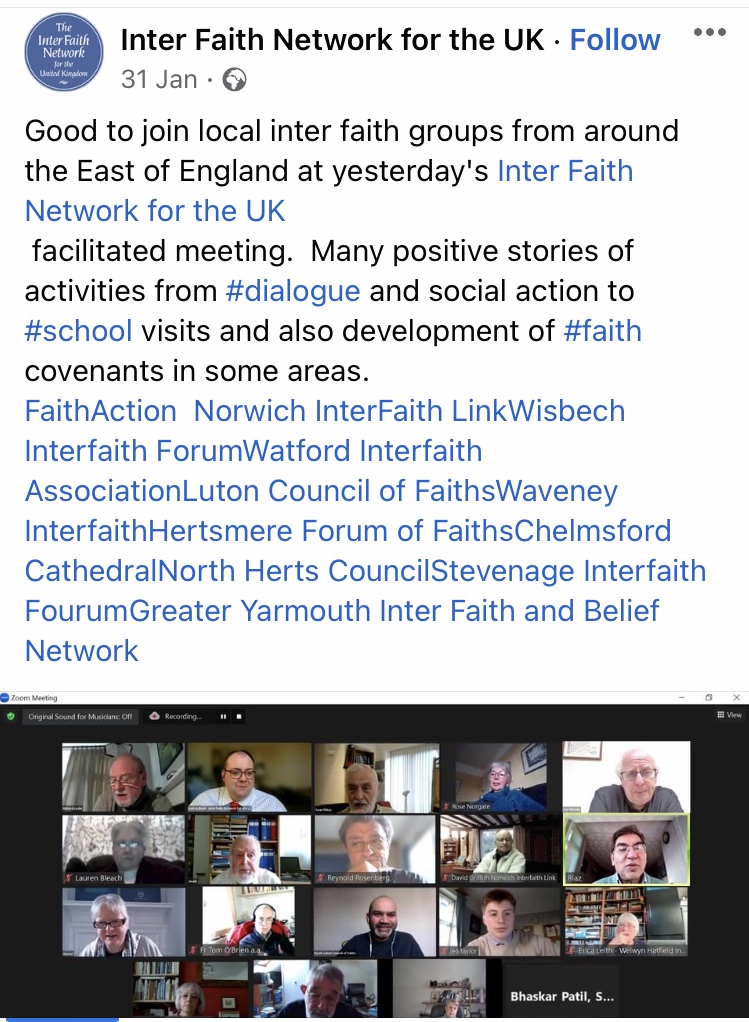
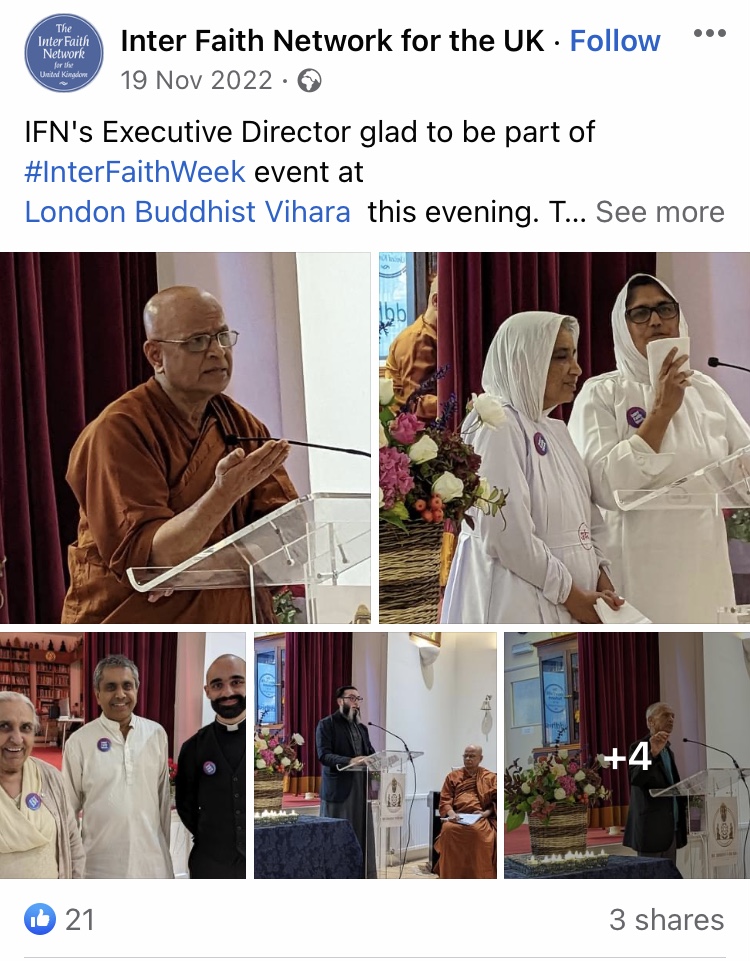
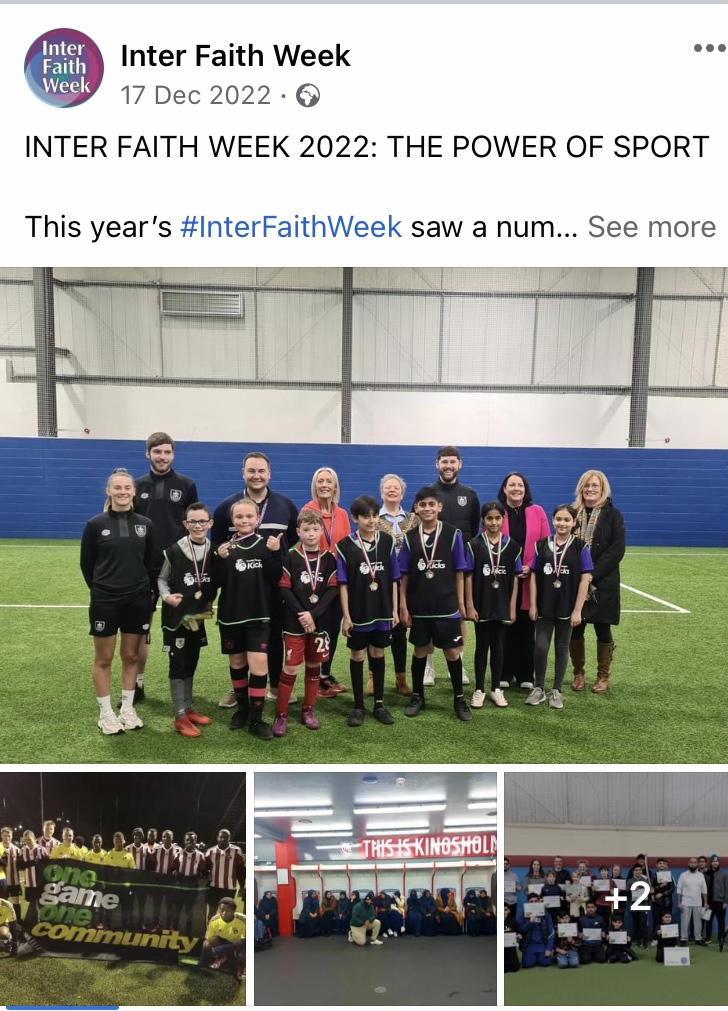

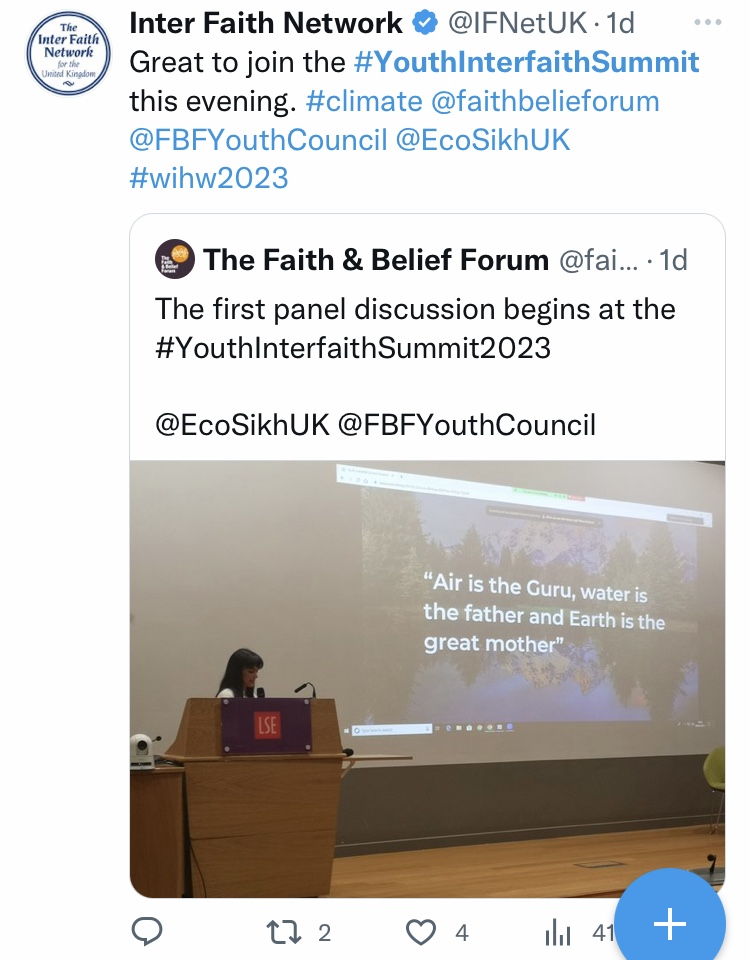
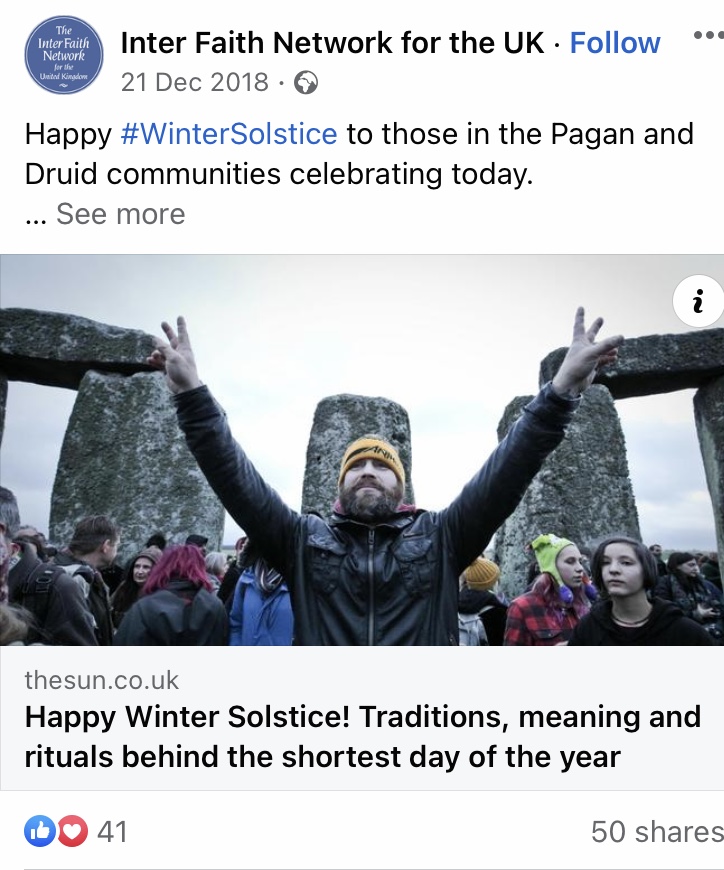
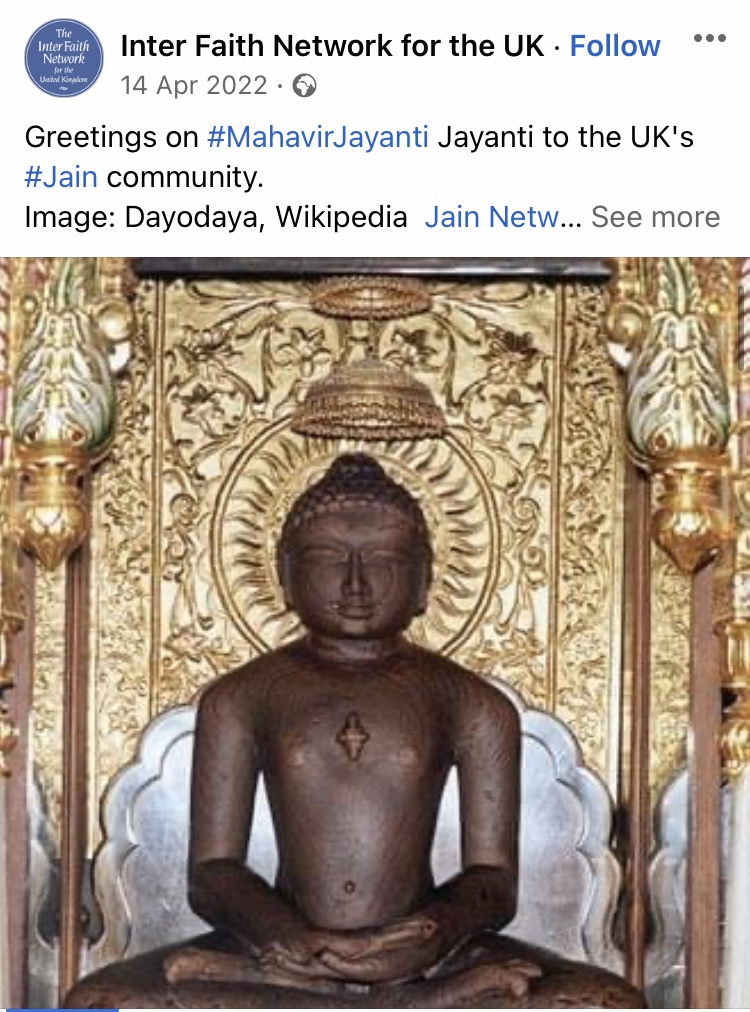

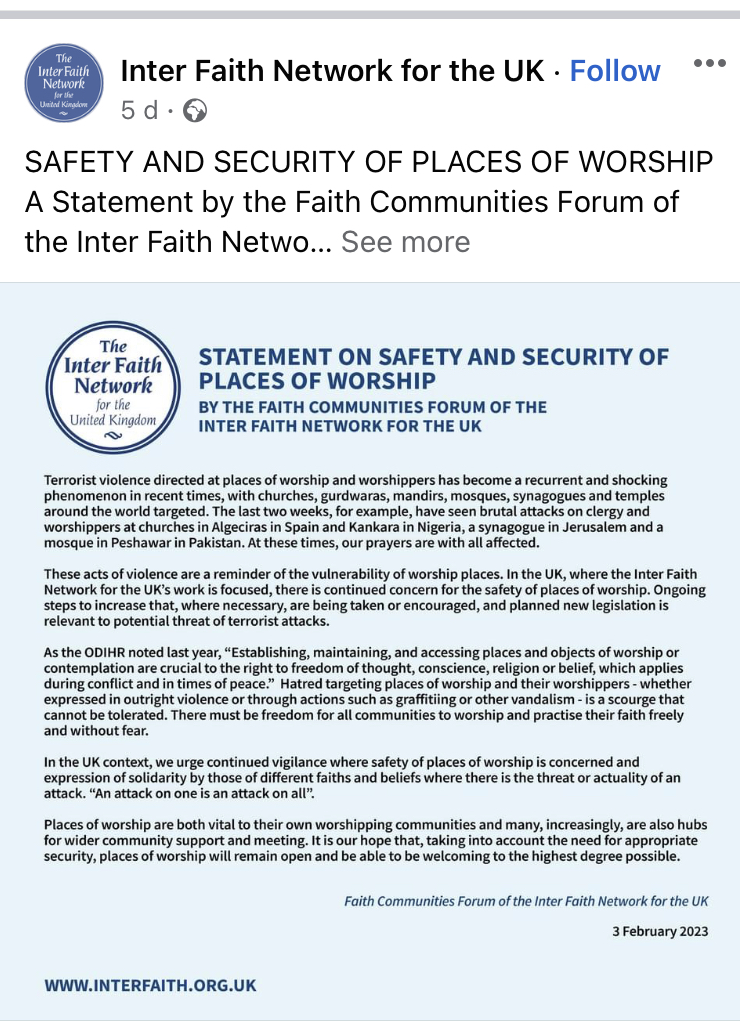
4. Popular social media platforms
This subsection looks at the most popular forms of social media that are available in the UK and focuses on Facebook, Instagram, TikTok and Twitter. You can use a multitude of platforms, but this is not necessary or realistic for a small inter faith group to thrive online.
4.1 Facebook
- Facebook remains the most popular social media platform in the UK and 45 million Britons have accounts.
- Users on Facebook have a personal profile which they use to add friends, like pages and post written and visual content.
- The site has extended to include pages and groups which allow various forms of interaction. For more information of how to make a page see https://www.facebook.com/help/104002523024878 and to make a group https://www.facebook.com/help/167970719931213.
- Facebook allows users to create organisational homepages and this is particularly useful in regard to local inter faith organisations. All organisational pages require that there be a personal account linked as an administrator.
- Facebook uses tagging to help users identify users who are featured in content, to alert users when they are featured in something and the platform offers a simple guide of how to do this https://www.facebook.com/help/267689476916031.
- Facebook, like other social media platforms, makes use of hashtags. Hashtagging acts like a thematic marker to identify suitable content and users are able to create their own hashtags which collates all posts with this hashtag together which provides an easy way to find all information on this topic and helps to formulate a narrative. In illustration, during Inter Faith Week, the IFN encourages the use of the hashtag #InterFaithWeek.
- Using Hashtags is crucial to increase the chance of people engaging with your content, but it is advised that you don’t overuse hashtags as this can have a negative impact on your reach. For optimu coverage try and be as specific as possible with your hashtags.
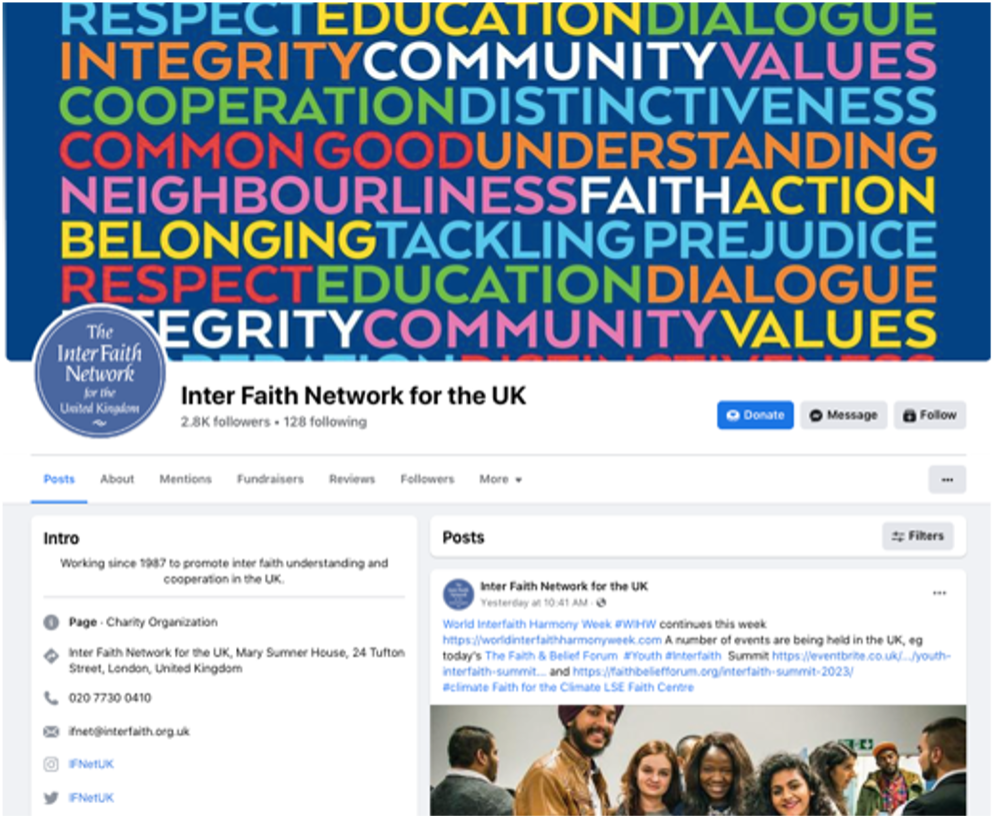
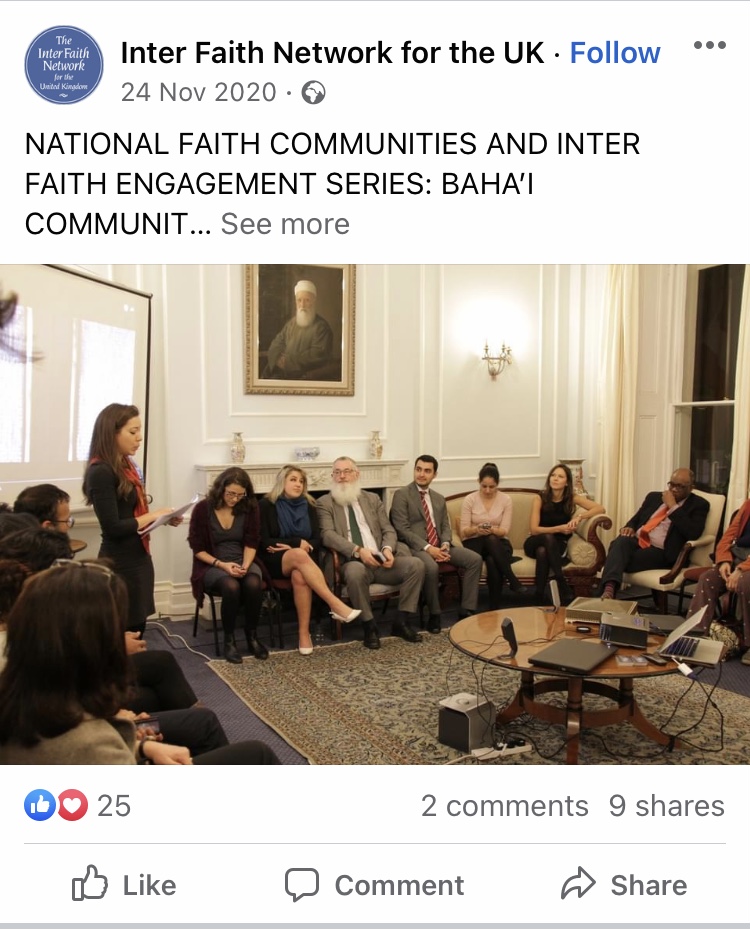

4.2 Instagram
- Instagram is a platform used for photo and video sharing. Individuals or organisations can create profiles where they share photos with followers on their ‘Instagram feed. You must post a photo or video with every post – you cannot just post text.
- There are over 35 million Instagram users in the UK alone.
- Although Instagram can be used in a limited format on a web browser, it is primarily designed for mobile phones and tablets.
- Instagram accounts are fairly straightforward to set up and information on how to do this can be found at https://help.instagram.com/155940534568753.
- You can post a maximum of 30 hashtags in a post unlike Twitter which only allows 3.
- Visual imagery is even more important in regard to Instagram and there exist a variety of functions such as reels, going live and stories. More information can be found at: https://help.instagram.com/314684928883274.

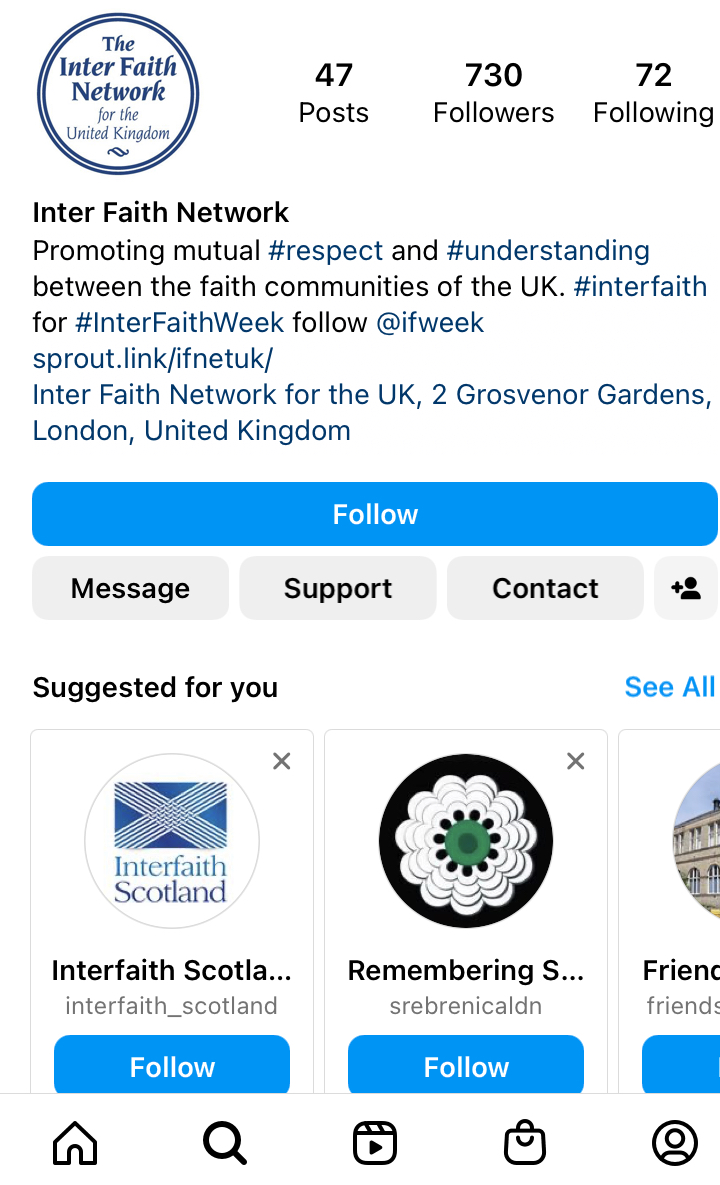
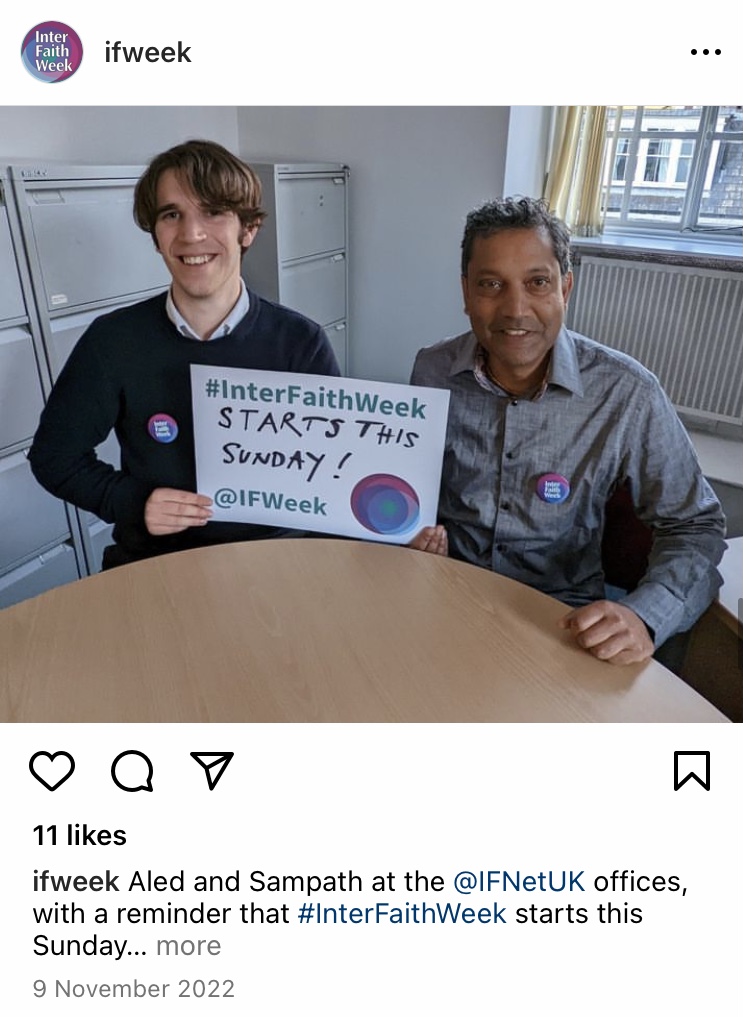
4.3 TikTok
- TikTok is a creative social media platform which combines several media elements such as music, video, images, filtering and editing. This means that much more time and creative effort are put into TikTok videos than other forms of social media.
- TikTok currently has 9.2 million UK users but predicts that by 2025 that this will rise to 15 million.
- If your organisation is very small and relies on volunteers it is likely that TikTok may require too much energy for your organisation. This is because of the lengthily time that it will require for your organisation to effectively edit videos and content and the IFN for example doesn’t make use of TikTok.
- However, if you’re part of a religious organisation which has a large youth presence and have volunteers or paid team members to dedicate a large amount of time to the platform then this may be the option for you.
- If you feel this a route that you wish to explore then Charity Digital offers more information: https://charitydigital.org.uk/topics/topics/a-charity-guide-to-tiktok-8245
4.4 Twitter
- Twitter is less widely used than Facebook, but there are 19.05 million users in the UK alone. It offers a variety of useful ways to interact with individuals and organisations and is a platform used by journalists and politicians, including at local level, and can be a great way of gaining the attention of councillors, mayors etc.
- Twitter has a character limit of 280 characters for all content and this requires that users succinctly summarise their thoughts into a short space.
- Unlike Facebook, Twitter doesn’t distinguish between individuals and organisations and all accounts operate in the same way. You can sign up to Twitter at https://help.twitter.com/en/using-twitter/create-twitter-account.
- Twitter also makes use of both hashtagging and tagging to assist users in searching for content. Tagging allows users to identify who is in a featured tweet and notifies those who are mentioned in it.
- A Twitter username is also known as a handle and appears after the ‘@’ in your account name. The IFN’s account name for example is @IFNetUK.
- Twitter is much faster than Facebook and people need to tweet 1-2 times a day to have a greater chance of accounts seeing your Tweets. You are able to retweet the content of other users, like and reply to tweets.
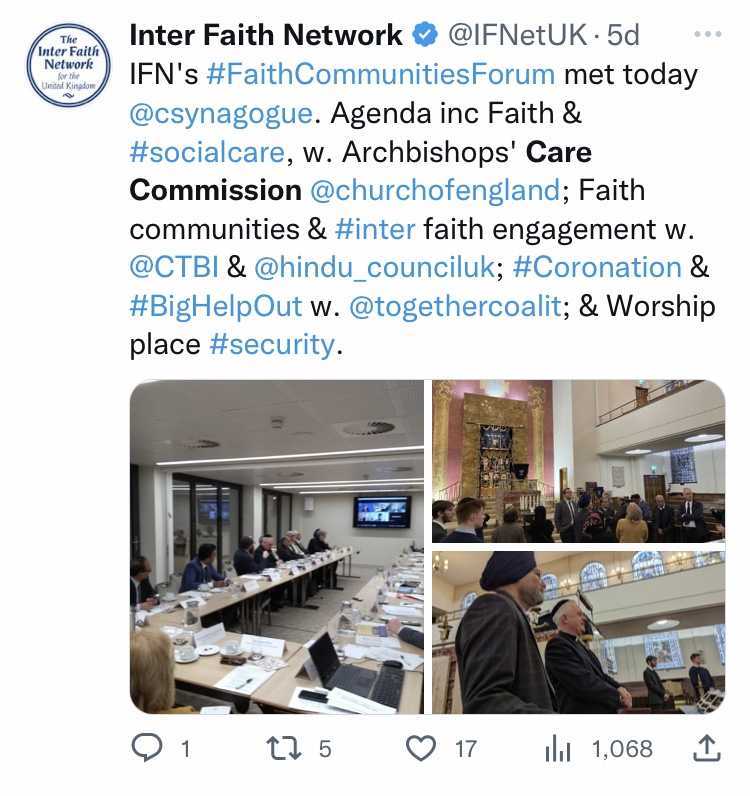
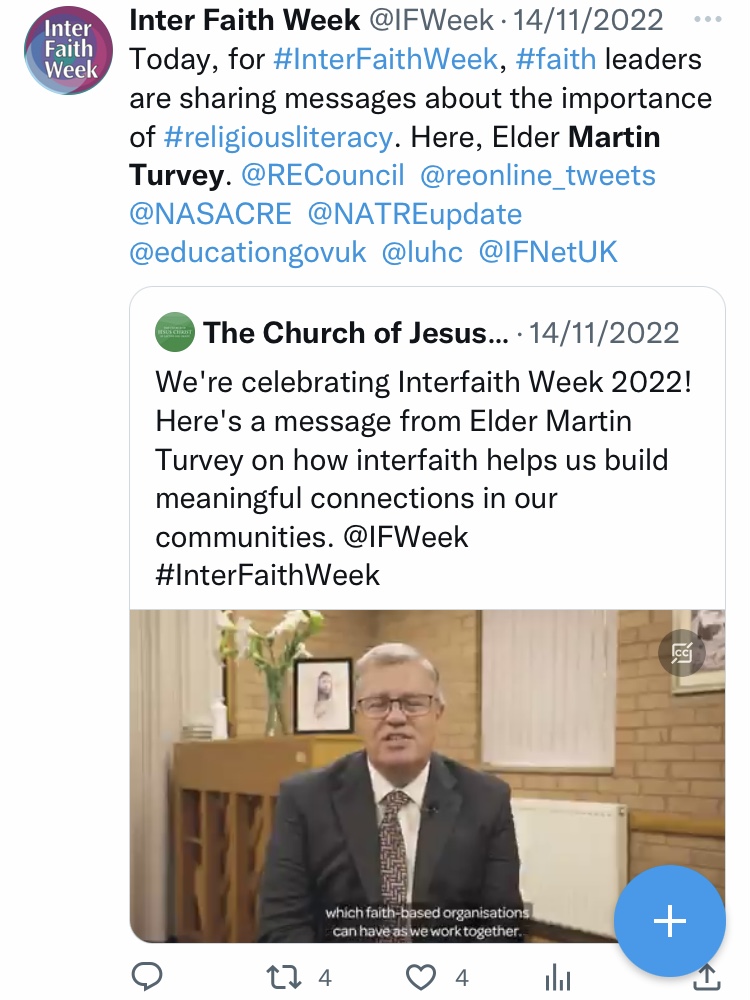
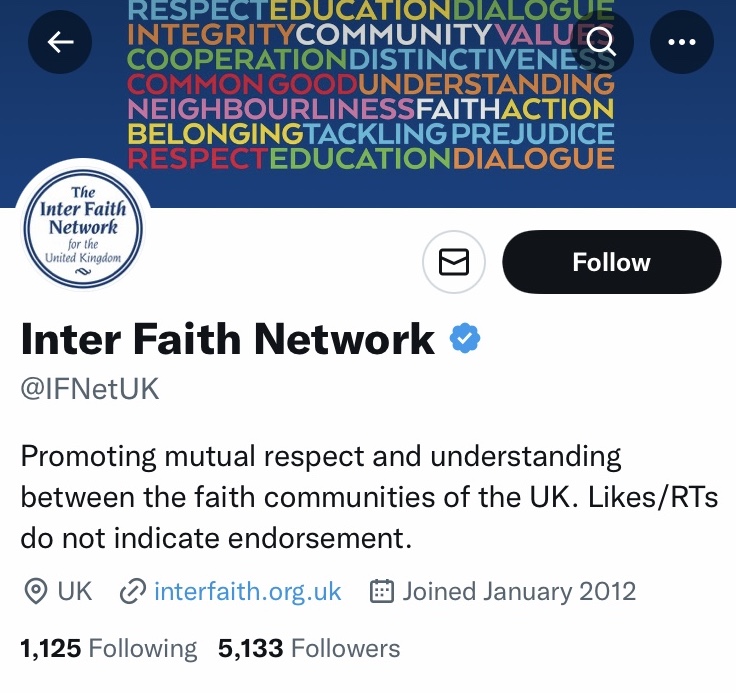
5. Glossary of Terms
- Analytics: a term used to describe social analysis tools and the data that is provided by these tools. Most social media platforms have analytic functions so organisations are able to gauge how well their posts are doing in terms of reach, impressions, engagement and follower growth.
- Direct Messaging: a direct message (DM) is private message that is sent through a social media platform. DMs from non-followers are blocked and sent to an alternative secondary inbox. However, inter faith groups who want to interact with members can change their settings to receive messages from anyone.
- Engagement: refers to any interactions that social media accounts have with your profile on social media such as likes, comments and sharing.
- Facebook Page: this what organisations will have to represent them on Facebook and differs from a ‘profile’ which is what individual users have. Facebook pages must be linked to a personal account who is known as the administrator of the page.
- Followers: social media accounts that have liked your profile or followed your account on social media.
- Handle: this is your username on social media and usually takes the form of @username. If you want to tag the accounts of other people you need to add their handle to your post, if I wanted to tag IFN I would use their handle @IFN. When you have multiple social media accounts it is advisory to use the same handle where possible to make it easier for potential followers to locate your accounts.
- Hashtag: a word or phrase which has the sign ‘#’ in front of it such as #InterFaithWeek. Hashtags are used throughout social media as thematic markers which contribute to wider conversations and topics. Clicking on a hashtags reveals a collation of the latest posts which make use of the tag. Hashtags are also searchable if you would like to find out more about a certain topic or theme.
- Hyperlink: a word, phrase, image or link that you can click on and which takes you to a specific website. In illustration if you click on IFN you will be taken the homepage of Inter Faith Network.
- Impression: a metric which measures the number of times that a post was displayed on a social network. It is not a metric of how many people have seen a posts as a social media user might have the same post or ad appear in their feed on multiple occasions. Every time this shows up in this feed it is counted as one impression.
- Newsfeed: the term for the screen that shows all of the posts and activity of the accounts that you follow on Facebook. On other social media platforms the ‘newsfeed’ is merely known as your ‘feed’.
- Notification: a message or alert which indicates social media activity. If someone was to retweet one of your tweets you will receive a notification on your mobile phone and/or computer which will alert you to this. Similarly, if someone liked your post on Facebook, you would also receive a notification.
- Profile: a profile is a place on social media platforms where you can share information about your organisation such as photos, videos, what your organisation does and your location.
- Post: any public social media status update, photo, video or even blog. Direct messages do not count as posts as they are private and can only be seen by you.
- Reach: a metric which refers to the amount of people who have been exposed to a post or ad. This doesn’t that they’ve definitely seen your post as individuals may have scrolled past it. It indicates that your post has appeared on their feed.
- Retweet (RT): the copying of another user’s comments on Twitter for your own followers to read. This is similar to the act of sharing on the Facebook platform.
- Sharing: the act of reposting another’s content on your account’s feed for your followers to see. This is very similar to the act of retweeting on Twitter.
- Social Media Platforms: a general term to refer to different systems of sharing information on the internet to a specific group of followers. Social media platforms include the likes of Facebook, Instagram, LinkedIn, TikTok and Twitter.
- Tag: a keyword added to a social media post to categorise content. You can tag a someone or an organisation in a post or photo which is more than merely writing them in your post as they will receive a notification from this on their account. To do this, input an ‘@’ before their name on Facebook, Twitter and Instagram such as @IFN. When you do this on Facebook the ‘@’ will disappear and a linked name will remain.
- Troll: a social media user who makes deliberately offensive posts or message with the aim of annoying other users.
- Tweet: a social media post on Twitter which can only be formed of 280 characters, but can include photos and videos.
- URL: a website link such as https://www.interfaith.org.uk/. URLs can often be very long and you can use software such as Bitly to shorten the length of hyperlinks.
- Verified: To be verified on social media platforms you generally must prove your identity to a social media platform provider for which you would receive a verified label on your account which usually takes the form of a tick. This is done to prove the legitimacy of account and to reduce the likelihood of fraud. However, Twitter have recently changed their policy of verification and only accounts which are actively subscribed to Twitter blue are eligible to receive the blue checkmark. More information about this can be found at: https://help.twitter.com/en/managing-your-account/about-twitter-verified-accounts.
6. Further resources
- Near Neighbours offer a scheme called #Diverting2Digital, a pair of free workshops, both 90 minutes in length which help your organisation or group to make the move online: https://www.near-neighbours.org.uk/diverting2digital.
- Near Neighbours also produced social media guidance in 2018 and can be found at https://www.belongnetwork.co.uk/wp-content/uploads/2019/04/NEARNEIGHBOURS_SocialMediaToolkit_WEB.pdf.
- Status Brew produced their own social media guide for churches in 2022 and can be found at https://statusbrew.com/insights/social-media-for-churches/#the-benefits-of-social-media-for-churches.
- IFN hosted a webinar in 2021 on upskilling which can be found at: https://www.interfaith.org.uk/resources/webinar-for-local-inter-faith-groups-on-digital-upskilling.
- Age UK offers a series of beginner guides to creating social media accounts on Facebook, Twitter and Instagram: https://www.ageuk.org.uk/information-advice/work-learning/technology-internet/using-social-media/.


